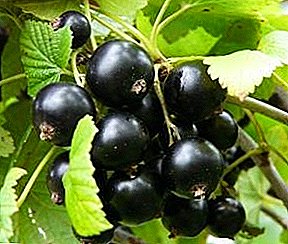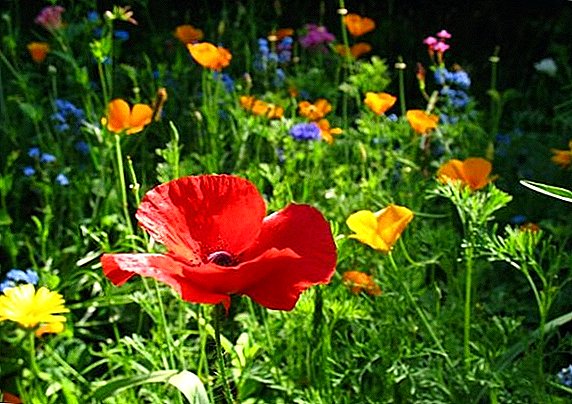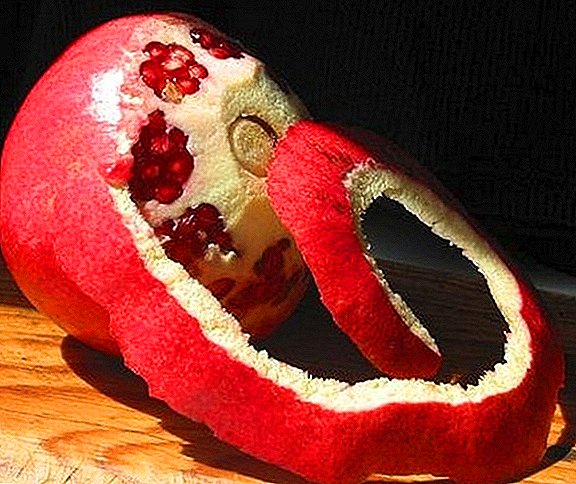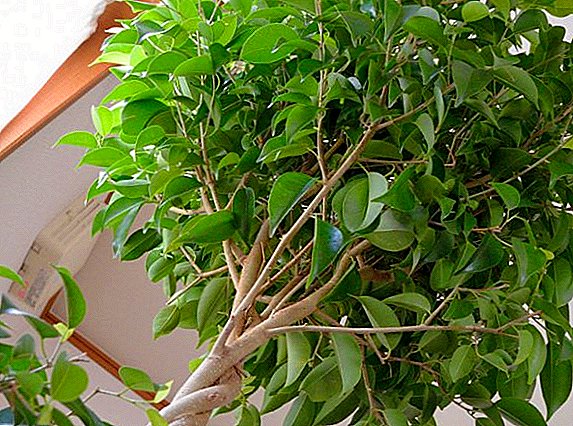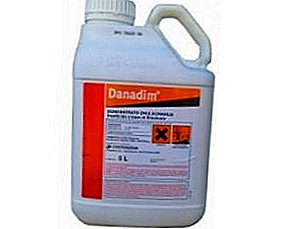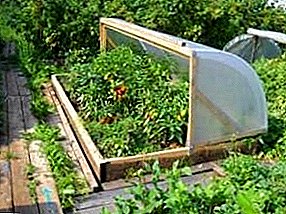
The owner you are blessed 6 acres or a solid land, where you plan to organize your own business of growing and selling agricultural products, the question of choosing methods of growing and seedlings, and early vegetables will rise.
Cultivation of various plants in the open field, especially in the area of risky farming, is too unpredictable. And if it is possible to install one or more stationary greenhouses, their owner may consider himself lucky.
However, far more often gardeners and gardeners prefer small, easy to make and economical greenhouses, which can be made literally from scrap materials.
Every culture has its own greenhouse?
Almost all cultures are suitable for growing in greenhouses. After all, eggplants, watermelons, peppers and tomatoes - Southerners, who do not tolerate low temperatures, can kill seedlings even a small frost. At the first stage film covers are required to maintain a constant microclimate. They will help protect plants from hail, dew and fog, autumn frosts.
Vegetables
It is convenient to grow many vegetables in film greenhouses, boxes covered with frames with polyethylene or glass, tunnels.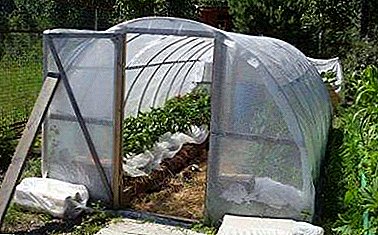
Greenhouse Tunnels collected from arcs, which are placed at a distance of 1, 5 meters from each other. On these arcs tightly tightened plastic wrap.
Ridges in such greenhouses are made from a mixture of humus and manure, foliage, which, decomposing, warm the roots of plants and the air under the film. In such mini - greenhouses it is good to grow cucumbers, undersized tomatoes, zucchini, squash.
Boxes also filled with manure and covered with frames with glass or film are suitable for growing tomatoes, peppers.
For airing At the end of May - June, the tunnels are opened from one or both sides. On hot days, the film is removed completely or half, covering the vegetables only for the night. In the second half of July - August, the film cover will protect the plants from cold dews and keep them warm. Even at the end of August you will be able to feast on young cucumbers and zucchini.
Eggplant
One of the most tender culturesneeding protected ground - eggplants. The soil in the greenhouse should be prepared in the fall.
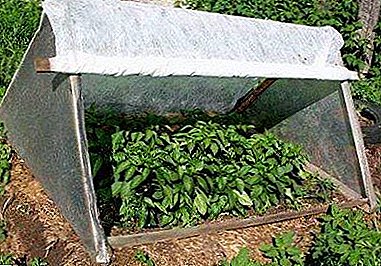 After removing the top layer of soil at 0, 5 - o, 8 meters deep, in the trench put the posts, which are attached to the board. It is advisable to make double-walled walls.that store heat better. After removing the remains of the tops, stalks and leaves from the box, dig the soil.
After removing the top layer of soil at 0, 5 - o, 8 meters deep, in the trench put the posts, which are attached to the board. It is advisable to make double-walled walls.that store heat better. After removing the remains of the tops, stalks and leaves from the box, dig the soil.
Spill it well with water and disinfect: bleach - 100 grams per meter, or formalin, 250 grams of a 40 percent solution of which is diluted with 10 liters of water and shed the ground, where young eggplants will grow.
These measures will help preserve all seedlings.
Already in February - March, the hostesses sow the seeds of eggplants in nursery nurseries. For 2 - 3 weeks before planting in the greenhouse, the temperature in the room where the seedlings grow, is lowered to 15 - 18 degrees. During the week before planting, they are fed with organic fertilizers, treated for diseases and pests. You can use Bordeaux liquid, you can profit.
In the greenhouses eggplant can be planted in the first decade of June. If warm, sunny weather is established, the soil is warmed, they will normally pass acclimatization.
At the bottom of the future greenhouse one week before the planting of the seedlings, manure is poured, and then a layer of earth. Top of the greenhouse frayed with polyethylene. In such greenhouses, plants grow and develop well: if necessary, the frames are easy to lift or open for ventilation.
It is necessary to dig and well loosen the soil.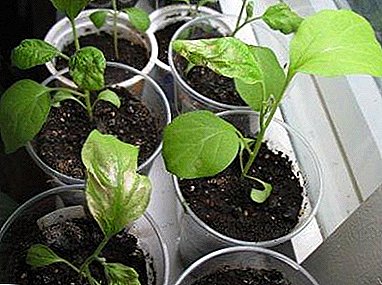
The holes with a depth of 16 - 20 centimeters are made at a distance of 40 - 50 centimeters from each other. It is better to plant seedlings in one row, but if you decide to save space, you can plant eggplants in a staggered manner, increasing the distance by 10 centimeters.
Shower heavily seedlings 3 hours before transplanting, this will help avoid damage to the root system.
Warm water is poured into the wellsthen carefully put a bush in it, sprinkle it with soil.
After transplantation, you need to feed each seedling.
Greenhouse eggplants are higher than those grown in open ground, therefore, as they grow need to tie up. Water the plants carefully, as the root system is located close to the surface. Daily watering, airing, feeding 3-6 times a month - and the crop will amaze you.
Bow
Grow onion under the film very simple. You can use the simplest film cover, and portable frame greenhouse, and the box.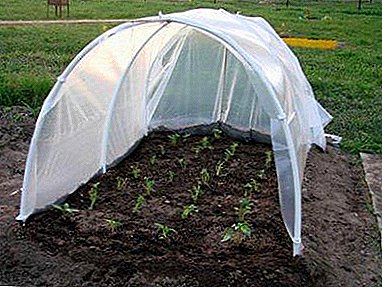 Early harvest green pen can be obtained by planting onions in the fall. Onions grow well in places where eggplant, tomato or beetroot were the predecessors.
Early harvest green pen can be obtained by planting onions in the fall. Onions grow well in places where eggplant, tomato or beetroot were the predecessors.
If you plant it on pen forcing, you can plant sevok close to each otherif you need turnipplant it at a distance 25 - 30 centimeters from each other. When finished with planting, cover the bed with a layer of peat, branches, film. In late March - early April, the shelter can be removed, the beds should be properly watered and covered with frames with glass, polyethylene or polycarbonate.
A full-fledged green feather can be cut off after 3 - 4 weeks.
If you plant onions in early spring, you will harvest the first crop in May or early June. Do not forget to water the onions, feed them and air them on warm days.
Cabbage
Very easy to grow in the greenhouse cabbage. In order to get superearly harvest, you need to take care of the seedlings. Seeds of early ripe varieties of cabbage are sown in seedling boxes with a light, organic-rich soil in mid-February.
- For growing greenhouse cabbage is best to use buried in the ground box with double planked walls, able to retain heat well and not allow soil to crumble on plants. In late March - early April, you need to free it from the snow, check the condition of the frames with which you will cover the greenhouse.
- After the appearance of the first leaf seedlings need swoop down, seated at a distance of 5 - 10 centimeters from each other.
- Greenhouse fill in bioorganic, which, when decomposed, warms the soil well. Top poured a mixture of soddy humus, black soil and earth. When the temperature in the greenhouse is 20 degrees, you can set up cups with your shoots, giving the plants to get used to the new microclimate before transplanting. But many planted cabbage immediately into the soil.
- Distance between seedlings should not be less than 5 centimetersif you plan to plant cabbage in open ground. If it matures under the film, the distance between them should be 40 - 50 centimeters.
- Watering requires special care: need to moisten the entire soil, pouring 1-2 liters for each plant, at least three buckets of water per 1 square meter. But at the same time make sure that the water does not fall on the leaves, so that the soil near the base of the stems is not washed away. Do not pour out all the water immediately, make sure that it is completely absorbed. Abundant watering - 1 time in 10 - 15 days. If the weather is sunny and warm, watering the cabbage is necessary once every 3-4 days, preventing the soil from drying out.
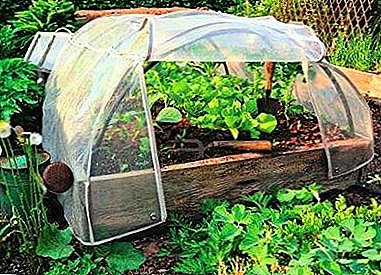
The first heads of white cabbage with this method of cultivation can be cut already in the middle of July.
Chinese cabbagewhich, for good growth and fast aging, requires a high level of humidity, air temperature from 15 to 25 degrees and a lot of light, it grows well as greenhouses - tunnels, and in boxes. During the summer from one site you can get two, or even three crops. Early varieties are planted in greenhouses under the film in the middle of April, late ripening varieties - in mid-June. Beijing cabbage withstands cooling below zero, so you can remove it in the greenhouse in mid-October.
Feeding needed plants, to stop the growth: once in 7–10 days, be sure to water the cabbage with urea solutions at the rate of 2 spoons per bucket of water, organic fertilizers. These cultures respond well to fertilizing with bird droppings, diluted 1:20 with water.
Radish
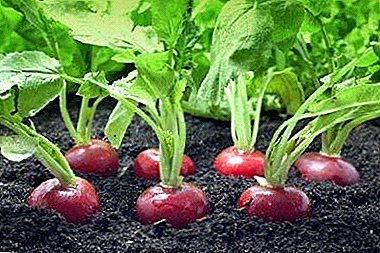 To grow radish in the greenhouse you need choose the brightest place - The plant does not tolerate a lack of sunlight.
To grow radish in the greenhouse you need choose the brightest place - The plant does not tolerate a lack of sunlight.
Planted in greenhouses, these roots can be in early April. Best used for planting the largest seeds as the radish grown from small ones almost always has an arrow.
Radishes can be sown every 25 days, and from mid-August, the film cover can be used again to harvest the crop until late autumn.
Greenery
In the greenhouse greens can be grown by the beginning of May. Dill, lettuce, watercress, mustard, parsley not afraid of frost. It is possible to sow greens in a greenhouse prepared in autumn as early as April. The film cover will protect from cold and keep warm. Do not forget to water the seedlings, to air a greenhouse on sunny days. By the time the structure is needed for other crops, the greens will appear already in the open field, but within 1 - 1, 5 months the greenhouse, as a rule, empty in April-May, will be beneficial, delighting you with the first vitamins.
The usual film stretched over the arc Above a dill or salad bed can provide shelter, which can also help to get a very early harvest.
Flowers
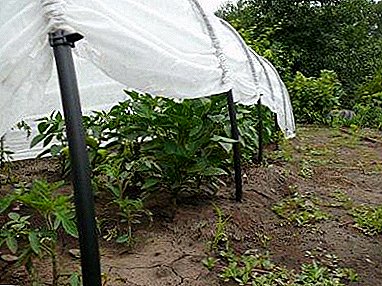
Film Shelters and Greenhouses when growing flowers are needed so that sudden frosts do not destroy the fruits of your labors.
Most often for protection of seedlings of flowers and already formed plants use tunnel greenhousespulling the film on the arc at the risk of frost.
Such shelters allow you to accelerate the growth of seedlings, to approximate the timing of flowering.
Tulips, daffodils, crocuses, viola and many others will delight you with flowering a month earlier if they grow in greenhouses - boxes and even just under the film.
Strawberry
To approximate the terms of fruiting of this crop will help the tunnel, the film of which can be easily lifted for ventilation. Often, when growing strawberries in greenhouses, buried and insulated trenches are used with constantly updated topsoil.
Tunnel greenhouses they set over the beds with strawberries already in April, by the middle of July the film can be removed, in the middle of July - August the film on such a greenhouse can again come in handy.
In the cold summer in risky farming areas strawberries in a greenhouse are almost always under cover, for low-growing plants do not require a large amount of covering material.
Watermelons
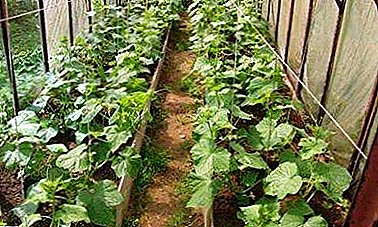 A high bed of organic sandy soil, covered in a box with wooden walls is necessary for a successful planting and growing watermelons in a greenhouse.
A high bed of organic sandy soil, covered in a box with wooden walls is necessary for a successful planting and growing watermelons in a greenhouse.
Frames with glass or thick film will protect gentle culture from spring frosts. As the gourd culture grows, the height of the shelter can be easily changed with the help of arcs, which are installed in the soil at a distance of 1 to 1.5 meters.
Water the soil in greenhouses 1 time in 3 - 4 days. When the first signs of fruit watering increase.
Remember that if you planted seedlings too thick, trying to save space, the number of ovaries will be more, but the fruits themselves - less. The optimal distance is from 40 to 60 centimeters.
Important: watermelons perfect do not tolerate weeds, therefore, not only watering, loosening and dressing, but also constant weeding is required for harvest.
Interesting: the termination of watering for 3 - 4 weeks before the day of harvesting and the restoration of film cover, so that the rain does not soak the garden bed, help get not only perfectly matured, but also sweet, sugary berries.
Seedling
Suitable for seedlings any types of greenhouses. It is very important to ensure that access to seedlings is convenient.
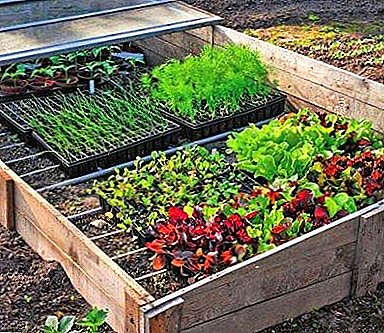 It is best to put already dive plants in greenhouses, transplanted in cups.
It is best to put already dive plants in greenhouses, transplanted in cups.
Permanently open greenhouses in spring undesirable because there is a risk hypothermia seedlings. With this arrangement, seedlings of time for irrigation and fertilizing takes much less than when sowing seeds into the ground.
Sow on warm beds under shelter to a permanent place the best thing cucumbers, watermelons, zucchiniwho do not like transplants.
Take seriously the choice of location for a greenhouse, there should be a lot of sunlight so that the seedlings are not stunted, with overly long and frail stalks.
When the temperature starts to rise to 18 - 20 degrees during the day, you can start airing, hardening of seedlings: first open for 10 - 20 minutes, gradually increase the time to 3 - 4 hours.
Before planting seedlings, the soil in the greenhouse is watered abundantly so as not to damage the roots when digging.
Conclusion
Easy-to-make greenhouse shelters provide significant assistance to both gardeners and owners of large plots of land. With the right choice of the greenhouse model, the place for its placement and covering materials, they significantly reduce the risk of freezing, death of seedlings and young plants, increase the time of fruiting, help to get a very early harvest of both greens, and vegetables and berries.


